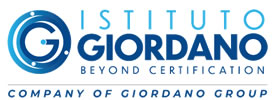Labinsight: the metallurgy laboratory
(Pubbl. 18/01/2024)Tag:
labinsightmetallurgy
The Metallurgy laboratory, established in the 1990s, has been involved for more than 20 years in the study of the chemical, physical and technological characteristics of metal alloys, with a focus on steels and their applications.

To find out more about the section, we asked the manager, Paolo Orioli, who told us in detail about his work.
1. What are the main activities you carry out in the laboratory?
The main activity is related to the world of welding. As an institute, we operate in the field of welding procedures and operator qualification. I carry out part of the required tests, such as hardness tests and macrographic and micrographic analyses, in order to assess the conformity of the welding assays with industry standards.
The second important area is the characterisation of metallic materials by means of chemical analysis, hardness tests, metallographic analysis, verification of protective coatings such as galvanising, etc. Basically, we work on steels and stainless steels, but we can also give answers on cast irons, aluminium alloys and copper alloys.
The third and last area of interest, excluding single and extemporaneous tests that can always happen, are the tests on cutting and drilling processes required by UNI EN 1090-2 and UNI EN 1090-3 standards. Companies that work in the metal carpentry industry and have to certify their processes must test assays, cut, and drilled with their equipment. Samples must be tested for roughness, perpendicularity, hardness and hole quality according to the standards.
2. What regulations govern testing activities?
For welds, I can point to UNI EN 15614-1, the basic standard for the qualification of arc welds on steel alloys.
For material characterisation, the standards are virtually endless. One can certainly mention the NTC 2018, the Ministry's technical construction standards that regulate testing activities on construction sites and on materials taken from construction sites.
For the last point, the standards mentioned above UNI EN 1090-2 and UNI EN 1090-3.
3. What instruments are used to perform the tests?
The main ones I would say:
 Visit the dedicated page for further details.
Visit the dedicated page for further details.

To find out more about the section, we asked the manager, Paolo Orioli, who told us in detail about his work.
1. What are the main activities you carry out in the laboratory?
The main activity is related to the world of welding. As an institute, we operate in the field of welding procedures and operator qualification. I carry out part of the required tests, such as hardness tests and macrographic and micrographic analyses, in order to assess the conformity of the welding assays with industry standards.
The second important area is the characterisation of metallic materials by means of chemical analysis, hardness tests, metallographic analysis, verification of protective coatings such as galvanising, etc. Basically, we work on steels and stainless steels, but we can also give answers on cast irons, aluminium alloys and copper alloys.
The third and last area of interest, excluding single and extemporaneous tests that can always happen, are the tests on cutting and drilling processes required by UNI EN 1090-2 and UNI EN 1090-3 standards. Companies that work in the metal carpentry industry and have to certify their processes must test assays, cut, and drilled with their equipment. Samples must be tested for roughness, perpendicularity, hardness and hole quality according to the standards.
2. What regulations govern testing activities?
For welds, I can point to UNI EN 15614-1, the basic standard for the qualification of arc welds on steel alloys.
For material characterisation, the standards are virtually endless. One can certainly mention the NTC 2018, the Ministry's technical construction standards that regulate testing activities on construction sites and on materials taken from construction sites.
For the last point, the standards mentioned above UNI EN 1090-2 and UNI EN 1090-3.
3. What instruments are used to perform the tests?
The main ones I would say:
- mET011 microscope
- mET014 optical emission spectrometer
- mET002 durometer.
















 Do you need more information about our services?
Do you need more information about our services?